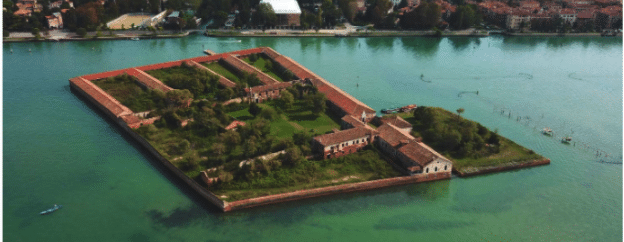Originally published on 23 April 2020 on CEBM.net
Tom Jefferson, Carl Heneghan
At the entrance of the lagoon in Venice lie two apparently insignificant and scarcely visited islands:
Lazzaretto Nuovo and Lazzeretto Vecchio (the New and the Old).
The term “lazzaretto” or lazarett is thought to originate from the corruption and contraction of the names of Santa Maria Di Nazareth (the original name of the island now Lazzaretto Vecchio) and the resurgent Lazarus, patron saint of plague victims.
The two islands located in the Venetian Lagoons were used as a segregation point for merchandise and people arriving from the orient. Upon arrival, they spent forty days in isolation before being allowed to rejoin society. Quaranta is the Italian word for forty, quarantena or quarantene meaning forty days – a popular term in these days of the crisis.
The Republic of Venice was a leading European trading post in the middle ages. Goods and people came from far away lands. Somehow the Italians knew you had to be careful with traded goods, because of the risk of spread on objects and surfaces.
And so, the practice of quarantine began in the 14th century to protect from plague epidemics. The lazaretts became the places of isolation and confinement for the plague or suspected plague victims.
The architecture of the surviving buildings on the islands is simple: square enclosure around a green with cubicle-like cells and, for goods, a huge hall where air could circulate. Being islands, no one could come and go as they pleased and guards were stationed on both islands.

Notice the surviving buildings within a walled enclosure. Originally no vegetation was allowed to grow on the island which was completely paved over. Plants were thought to spread the plague.
The contrast between the new and the old is valuable for understanding the current outbreak: The contamination of our hospitals, staff and visitors with a mixture of infectious and non-infectious patients flies in the face of our accumulated historical knowledge might condemn us to repeat the mistakes of the past.
AUTHORS
Carl Heneghan is Professor of Evidence-Based Medicine, Director of the Centre for Evidence-Based Medicine and Director of Studies for the Evidence-Based Health Care Programme. (Full bio and disclosure statement here)
Tom Jefferson is an Epidemiologist. Disclosure statement is here
